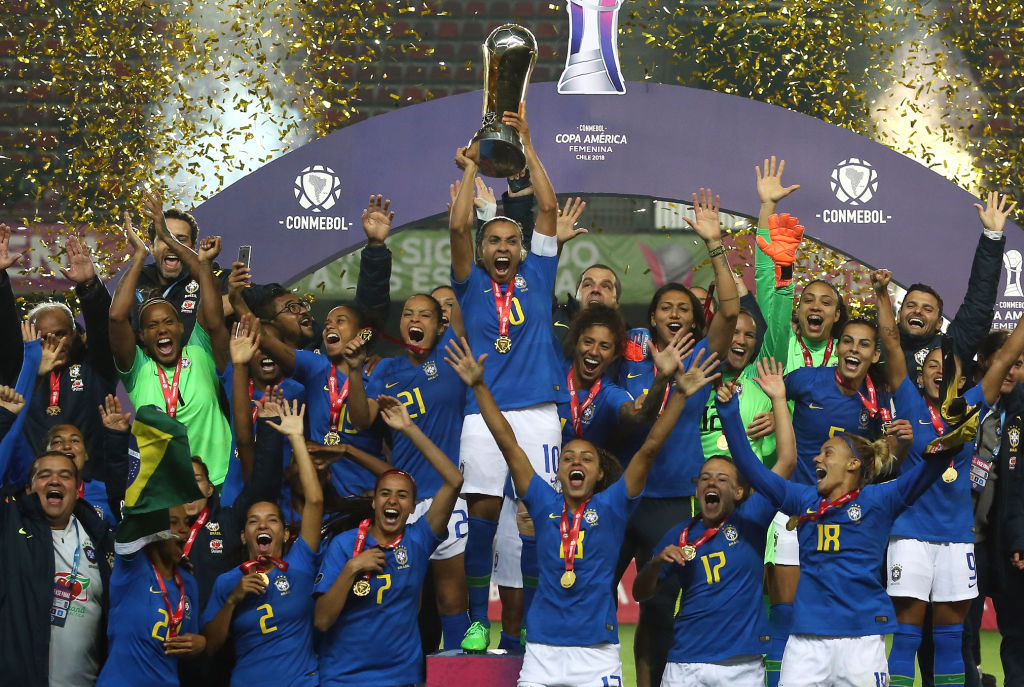
The FIFA Women’s World Cup 2019 kicks off in Paris on Friday. From new teams to new kits to a new host, here’s your cheat sheet for this year’s tournament.
Eyes of the world
Women’s soccer is more popular in the U.S. than anywhere else in the world. The dominance of the men’s game nearly everywhere else was the reality Germany’s women archly pointed up in a video noting that the prize for the first of their eight European championships was a tea set. But the rest of the world is finally starting to catch on to the excellence of the women’s game. In April, FIFA reported more than 720,000 tickets had been sold, over 50,000 more than at the same point for the previous World Cup, and the opening match sold out within 48 hours. TV viewership promises to be in the hundreds of millions; in Europe, national broadcasters like the BBC are showing more of the matches live on mainstream channels.
A star stays home
You wouldn’t have expected to see a men’s World Cup without luminaries like Lionel Messi or Cristiano Ronaldo. But the women’s tournament will be missing the first winner of the Ballon d’Or Féminin, given to the best women’s player in the world: Norway’s Ada Hegerberg. The 23-year-old striker for Lyon scored a record number of goals in the Women’s Champions League last season. But in an act of protest over how her country’s federation treats the women’s game, she stopped playing for Norway. Hegerberg’s absence dims the star wattage in France–along with her country’s chances.
From our Partner: IBM on how AI can drive equality
First-timers
Four teams are making World Cup debuts: Scotland, Chile, South Africa (above) and Jamaica. Chile has a rough path in Group F, where the top-ranked U.S. is expected to dominate. Scotland will face local rival England, which is riding high after this year’s triumph in the SheBelieves Cup. However, the Lionesses are wary of a slip-up, with English winger Karen Carney telling the BBC before the group draw, “I wouldn’t want [Scotland]. They’d have a lot of fans coming over, and the rivalry can be a leveler.” The top two teams from all six groups, as well as four third-place teams, will pass through to the knockout rounds.
Home cooking
Though France’s women have never won a major tournament, Les Bleues (above) are consistently among the favorites, particularly this year. On top of home-field advantage, almost a third of the squad plays for Olympique Lyonnais, far and away the most dominant women’s team in Europe, with 13 consecutive domestic league titles and four Champions League trophies in a row. The team’s stars include French captain Amandine Henry and vice captain Eugénie Le Sommer. But their Lyon teammates–like Canada’s Kadeisha Buchanan, England’s Lucy Bronze, Germany’s Dzsenifer Marozsan and Japan’s Saki Kumagai–populate the rosters of the competition.
Fresh looks
For the first time in the women’s game, many of the players’ kits will feature a unique design rather than being a copy of the country’s men’s uniforms. There are still a few unis that replicate the men’s designs–notably Nigeria’s, whose green-and-white zigzag pattern with black patterned sleeves echoes the men’s jersey that was so popular at last year’s World Cup. Other, more original throwback styles include Germany’s ’90s-inspired pattern by Adidas and Australia’s green, white and orange “brushstroke” look. Also notable is France’s hexagon-speckled away uniform, complete with matching socks.
More Must-Reads from TIME
- Cybersecurity Experts Are Sounding the Alarm on DOGE
- Meet the 2025 Women of the Year
- The Harsh Truth About Disability Inclusion
- Why Do More Young Adults Have Cancer?
- Colman Domingo Leads With Radical Love
- How to Get Better at Doing Things Alone
- Michelle Zauner Stares Down the Darkness
Contact us at letters@time.com